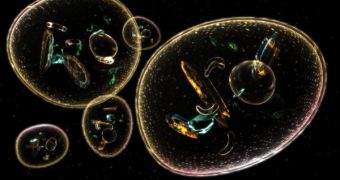The intricate processes behind cellular moving capabilities have been thoroughly uncovered for the first time by a team of biologists from Singapore's Agency for Science, Technology and Research (A*STAR). The find could be a major breakthrough in several fields of medicine, ranging from developmental biology to cancer growth control and memory enhancing.
Concluding more than a decade of continuous scientific endeavors, the results published in the October issue of Cell magazine present three individual proteins that are the main force behind cellular movements. Apparently, they bind together at the back of a cell, storing kinetic energy at the same time. When they separate, that potential is released and the whole cell is propelled forward. Researchers say that this discovery opened the door to new ways of looking at cellular movement in all types of tissue.
In addition to generating kinetic energy, the three individual proteins are also responsible for regulating the complex myosin network inside any cell. Myosin is a protein that is dominant in muscle fibers, giving them their elasticity, endurance and making them contractile. A different form is present in cellular walls, but its functions are pretty much the same, namely, protecting the cell from outside viruses or from other threats.
The research was funded by the GlaxoSmithKline Research Fund in Singapore, which was set up in the country since 1989. According to the team of scientists, Dr. Thomas Leung and Dr. Ivan Tan are largely "responsible" for the completion of the studies and were the most dedicated to obtaining viable results. Dr. Leung was the scientist who first hypothesized that the three proteins may also have other roles than that of ensuring myosin regulation. He spent countless hours in the laboratory to try and prove his theory, until he was finally able to say for sure how they worked.

 14 DAY TRIAL //
14 DAY TRIAL //